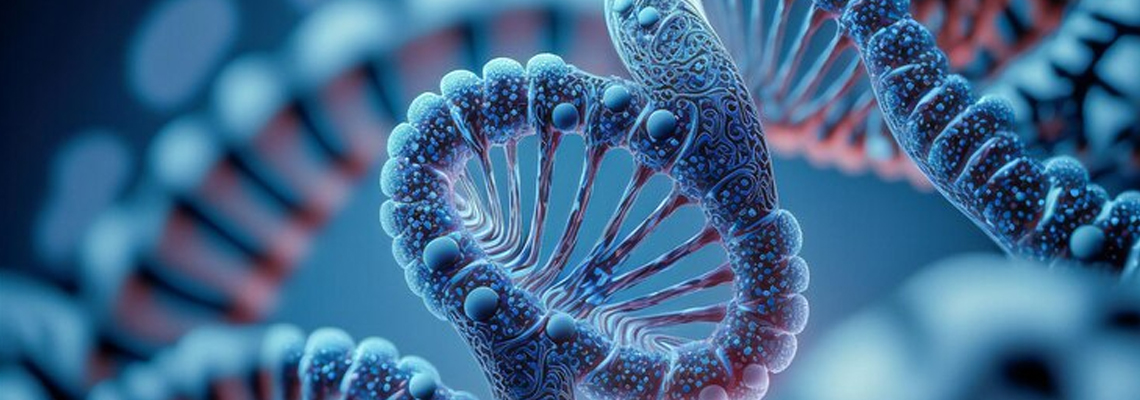What is Glycerol Kinase (GK)
Glycerol kinase, often called GK, is an enzyme found in many living cells. Its main task is to attach a phosphate group to glycerol, turning it into glycerol-3-phosphate. This small change makes glycerol usable in fat and sugar pathways inside the body.
This enzyme acts as a link between fat use and sugar balance. When the body breaks down fats, glycerol is released, and GK quickly processes it. The converted form can then move into energy cycles or help store fats when food is available.
GK is important for keeping steady energy both during meals and while fasting. Scientists also study it closely to see how cells manage energy flow. By learning about GK, researchers can better explain problems linked to fat storage, glucose use, and metabolic health.
Structure of Glycerol Kinase (GK)
GK is a protein enzyme built from chains of amino acids. Its structure folds into a shape that can bind both glycerol and ATP. ATP provides the phosphate group that GK transfers to glycerol.
The binding site is highly specific. It only accepts glycerol and ATP, which prevents mistakes in chemical reactions. The folded structure is stable, but small changes may affect how well it works. Mutations in the gene coding for GK can lead to enzyme defects.
Function of Glycerol Kinase (GK)
Glycerol kinase plays a direct role in handling glycerol inside the body. It changes free glycerol into glycerol-3-phosphate, a molecule that cells can move into larger energy pathways. This reaction keeps glycerol from being wasted and ties it back into metabolism.
Once formed, glycerol-3-phosphate can join fat pathways and help make triglycerides, which are stored as energy reserves. It can also flow into sugar cycles like glycolysis, where it helps release energy for daily activity. This dual role makes GK central in energy use.
When fats break down during fasting or exercise, glycerol is released into the blood. GK reacts quickly, turning that glycerol into a form the body can burn. This rapid action ensures that extra glycerol is not left unused.
By working this way, GK acts as a bridge between fat use and sugar metabolism. It keeps the body balanced, supports energy during low food intake, and helps store fuel when food is plenty. Without this enzyme, the system of storing and using energy would lose balance.
Role of Glycerol Kinase (GK) in Metabolism
- Bridge between fats and sugars: GK connects lipid metabolism with glucose metabolism by turning glycerol into glycerol-3-phosphate.
- Fuel during fasting: When fat tissues release glycerol, GK processes it so the body can make energy.
- Supports glucose production: In the liver, GK helps gluconeogenesis, which is the creation of glucose from non-sugar sources.
- Maintains blood sugar balance: This action keeps blood glucose steady when food is not available.
- Energy storage: In fat tissue, GK aids in making triglycerides, which serve as stored fuel.
- Dual role: It manages both storing energy when food is plenty and releasing energy when the body needs it.
Importance of Glycerol Kinase (GK) in Research
Glycerol kinase attracts strong interest in both medical and biochemical studies. Its role in energy balance makes it valuable for research on obesity, diabetes, and other disorders linked to fat and sugar control. By looking at GK activity, scientists can see how problems in metabolism begin and progress.
The enzyme also serves as a practical tool in laboratory work. It is built into test kits that check glycerol levels in blood or tissue samples. Tracking these levels gives a direct picture of how the body is handling fat and glucose at any moment.
Beyond medicine, GK is applied in biosensor design. These devices use GK reactions to generate signals that measure glycerol with accuracy. This helps in both clinical testing and broader studies of liver health, fat metabolism, and energy-related diseases.
Glycerol Kinase (GK) in Clinical Studies
Role in Human Health
Mutations in the GK gene can lead to Glycerol Kinase Deficiency (GKD). This rare disorder affects how the body uses glycerol. Symptoms include low energy, delayed growth, and developmental problems. Clinical studies are ongoing to improve early detection and treatment strategies (NIH source).
GK levels are also studied in diabetes research. Since glycerol metabolism is linked to glucose, changes in GK activity may signal problems in sugar control. Doctors track this enzyme in some metabolic studies to learn more about energy diseases.
Role in Enzyme Pathways
GK works with other enzymes like glycerol-3-phosphate dehydrogenase. Together, they form a chain of reactions that manage energy and fat balance. Clinical research uses GK assays to measure this interaction and predict health outcomes.
Sources of Glycerol Kinase (GK)
Natural Sources: GK occurs naturally in animals, humans, plants, and bacteria. In humans, it is most active in the liver, kidneys, and fat tissues. Microorganisms also produce GK to break down glycerol in their environment.
Laboratory Production: For research, GK is made in labs using recombinant DNA methods. Genes coding for GK are inserted into bacteria like E. coli. These engineered bacteria produce large amounts of pure enzyme. This method makes GK widely available for research and diagnostic kits.
Glycerol Kinase (GK) in Diagnostic Use
Use in Test Kits
GK is part of glycerol measurement kits used in labs. These kits detect glycerol in blood, serum, and other fluids. By linking GK activity with a color change or signal, the kits measure glycerol levels accurately.
Use in Biosensors
Biosensors with GK detect glycerol in food, clinical, or industrial samples. The enzyme reacts with glycerol, producing a measurable signal. This technology is fast, accurate, and useful in both research and applied industries.
Storage and Stability of Glycerol Kinase (GK)
GK must be stored under cold conditions to remain active. Enzyme powders are kept at −20 °C or lower. In liquid form, stabilizers like glycerol or buffers are added to extend shelf life.
If exposed to high heat or repeated freeze-thaw cycles, GK loses activity. For long-term use, labs follow standard storage protocols recommended by suppliers. Correct handling ensures accuracy in both research and diagnostics.
Future Scope of Glycerol Kinase (GK) Research
Future studies will expand GK’s role in medicine and technology. Genetic research may explain how GK variations affect health and energy use. Better knowledge can guide treatments for obesity, diabetes, and rare enzyme disorders.
In diagnostics, new biosensors with GK will allow real-time monitoring of glycerol in patients. This can improve disease tracking and health management. GK research is also linked to bioenergy fields, where glycerol is used in renewable fuel production.
Analytical Data Table
| Application Area |
Role of GK |
Reference |
| Metabolism |
Converts glycerol into glycerol-3-phosphate |
NCBI |
| Clinical Research |
Studied in diabetes and obesity |
PubMed |
| Diagnostic Kits |
Detects glycerol in samples |
NIST |
| Genetic Disorders |
Linked to glycerol kinase deficiency (GKD) |
NIH |
Glycerol kinase is a vital enzyme in energy and fat metabolism. It plays roles in health, research, diagnostics, and industry. From managing glycerol in the body to powering biosensors, GK connects science with daily health.
At AARMEDICA, we provide reliable enzyme products for clinical and research use. Contact us today to learn more about glycerol kinase supply, storage, and applications.
Frequently Asked Questions on Glycerol Kinase (GK)
1. What does glycerol kinase do in the body?
GK changes glycerol into glycerol-3-phosphate. This helps the body use fat and sugar for energy. Without GK, glycerol cannot enter energy pathways, and balance between storage and release is disturbed.
2. Where is glycerol kinase found in humans?
GK is mainly active in the liver, kidneys, muscles, and fat tissues. These organs need GK to regulate glycerol use and glucose production. It ensures energy supply during fasting and supports fat storage after meals.
3. What happens if someone lacks glycerol kinase?
A lack of GK can cause Glycerol Kinase Deficiency (GKD). This rare genetic disorder leads to low energy, delayed growth, and health problems. Doctors confirm GKD with enzyme tests and genetic studies before planning treatment.
4. How is glycerol kinase used in labs?
GK is used in diagnostic kits and biosensors. These tools detect glycerol levels in blood, serum, or food samples. The enzyme’s reaction creates signals that can be measured for accuracy.
4. Can glycerol kinase activity change with disease?
Yes, changes in GK activity are linked to diabetes and obesity. High or low enzyme levels may show problems in energy control. Clinical research tracks these changes to study metabolic health.
5. How do labs make glycerol kinase for testing?
Labs use recombinant DNA technology. The GK gene is inserted into bacteria, which then produce the enzyme. The enzyme is purified and stored for use in diagnostics, research, and teaching.
6. What is the link between glycerol kinase and glucose?
GK helps glycerol enter pathways that lead to glucose production. This link is vital during fasting when blood sugar drops. It allows the body to make glucose from fat sources.
7. How should glycerol kinase be stored?
GK powder is stored at −20 °C or colder. Liquid forms are kept with stabilizers like glycerol. Labs avoid heat and freeze-thaw cycles to protect enzyme activity for accurate testing.



